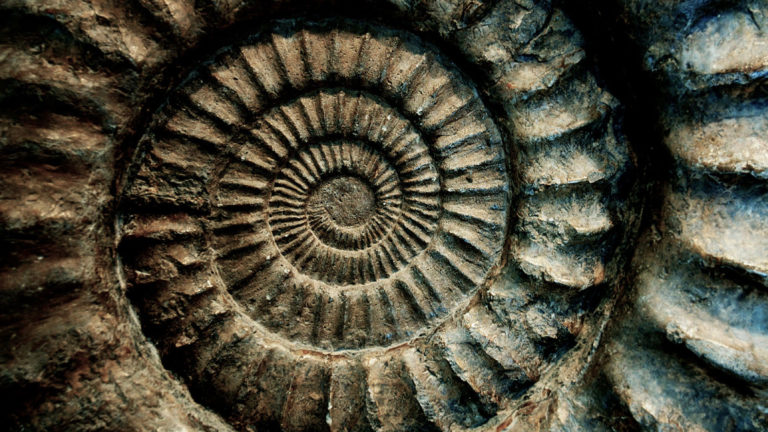A fossil is any physical evidence of life that occurred before the end of the last ice age, approximately 10,000 years ago. Fossils consist of skeletons, impressions, casts, tracks, trails, and burrows. Ancient seashells, footprints, petrified wood, and coal are all types of fossils. Fossils that are evidence of disturbance by once-living creatures, such as tracks, trails and burrows are referred to as trace fossils. The oldest known fossils are of single-celled bacteria, and may be billions of years old. Most fossils are found in sedimentary rocks. The fossils are preserved in the rock at the time the rock forms. Such rocks may be claystone, shale, siltstone, sandstone, limestone, or conglomerate.
Fossils may be formed by molding, casting, or by permineralization. A mold is the imprint of a living organism that has survived the length of time necessary to be considered a fossil. For example, a footprint preserved in rock is a mold. A cast may be formed when an organism decays away and leaves a mold in the rock. The mold is then filled in with silt, ash, or other material that eventually hardens into rock and preserves the exact shape of the original organism. Such a fossil is called a cast. Tree roots or animal burrows may be preserved as casts. Permineralization, sometimes called petrification, is the process that turns bone, shell, or wood into rock, but retains the original structures, such as cells, growth lines, and tree rings. If one mineral is exchanged for another mineral, the process is called replacement.
A paleontologist is a person who studies ancient life. Paleontologists enjoy both geology and biology and split their time between collecting fossils in the field and studying fossils in the laboratory. An admirable paleontologist never removes a fossil without permission. There is no collecting of fossils allowed in the Badlands National Park!
Most paleontologists do not keep the fossils that they collect. The fossils are prepared and placed into museum collections. There they are cleaned, catalogued, protected, and are always available for research and viewing by the public. The South Dakota School of Mines and Technology Museum of Geology, and The Journey Museum in Rapid City, plus the Black Hills Institute of Geological Research in Hill City are the best places to view fossils in South Dakota. The collections include an extensive display of fossils from the Badlands of South Dakota.

